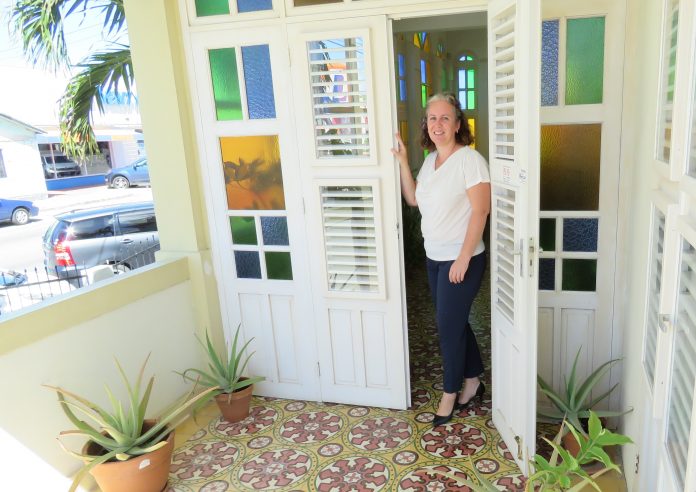The mix of cultures in Aruba is very visible in its architecture as -like in all cultures-, monuments reflect your history and your people. If you take the chance to leave the beach for a little while and take your car off the beaten track you will be surprised what you see. Anne Witsenburg is director of the Monument Fund Aruba and points out precisely why a monumental trip should not lack in your vacation’s itinerary.
The fund owns 12 monuments, out of the 36 protected monuments in the island. “But there are over 300 more monuments on the list to be protected and of course we dream to see that become reality as soon as possible.” The international guidelines that apply for monuments decide whether it will be a protected monument or not. “The building or object needs to be at least 50 years old, a special value in architecture or to history or to the people of Aruba is required and there has to be a certain uniqueness. If it was changed too much throughout time or there are already any of the same kind it is a no go.”
Useless islands
There is a difference between the islands when it comes to monuments, as Witsenburg explains. “That goes back to their history. Curacao used to be a very wealthy island where many -mainly Dutch- merchants lived close together and that is the reason you find this typical colonial Dutch style buildings packed in certain areas nowadays.
They are celebrating 20 years of Unesco heritage last year. Than scattered around the rest of the island you will see the smaller country houses.” Aruba and Bonaire were called the useless islands in the colonial time, so any Indian willing to live here was given a small piece of land to build his home. “That is the reason you find all these typical small houses scattered around the island. We actually have the same amount of monuments as Curacao though way smaller.”
Magic local touch
Some of the monuments owned by the Monument Fund Aruba are the light house, town hall, water tanks in both Oranjestad and San Nicolas. “We are wealthy in different styled monuments and my suggestion is to discover this world outside of the tourist zone. The book Monumental Guide comes in handy as there are three maps inside that guide you to the monuments and tell you about them.
But there are also possibilities to have your personal people guide. And the best is that I can almost guarantee you the magic of the local touch when you bump into an authentic cunucu house (country house) and talk to the owners. They will proudly share their family history with you.”
Outside inspiration
The Monument Fund acquires or buys monuments and restores them back into their former glory. Than they rent it out.
“That sounds easy, but it is incredibly complex as most monuments have multiple owners due to the fact that inheritances are split and all need to decide upon the selling.” They cooperate with the government office of monuments because they set the rules of what you can and cannot do to a protected monument. “We also have the task to maintain the buildings which is an ongoing process. The wind, the salt in the air and the sun that not only burns human bodies but also buildings are huge challenges. Next to that we do education, create awareness and maintain public relations about our monuments.”
The office of the Monument Fund is actually located in a monument itself. The building is beautiful and has a tropical style. “This house goes back to the 1920’s when it was built as a vacation house by Aruban entrepreneur Croes. He and his family came here to the outdoors as in those times there was only cunucu (countryside) here. They had big parties and enjoyed leisure time with family and friends.” Richer Arubans at that time looked outwards for architecture inspiration as that was considered chic, Witsenburg explains. Either to the US (art deco style like the water tower in San Nicolas), Holland (Dutch colonial style) or Colombia/Venezuela. “This house is inspired by a villa around Cartagena, Colombia. The ideas mostly came from the wives”, she says laughing.
Sustainable driven
Sustainability is a big thing to the Monument Fund Aruba. Witsenburg: “Obviously to restore old buildings and not destroy them to build new ones is already sustainable in itself. Than we have the technical sustainability as in using the right materials and techniques but also the social sustainability. That includes looking at the non-tangible part of heritage: the stories to be told, the music to be played, the dinners that were cooked in the places we try to restore. That keeps it alive. Most of our monuments are meant to be lived in so we would like to reintroduce the joy of living in a monument. We work together with private companies to look into that.” In their office they installed solar panels, use LED lightning and recently implemented an electrical charging point for electric vehicles.
The Monument Fund Aruba is open every day from Monday to Friday from 8 to 5. You are more than welcome to ask for information, guiding and help. For more information check out their Facebook page stichting monumenten fonds aruba and the website http://www.monumentenfondsaruba.com.

















